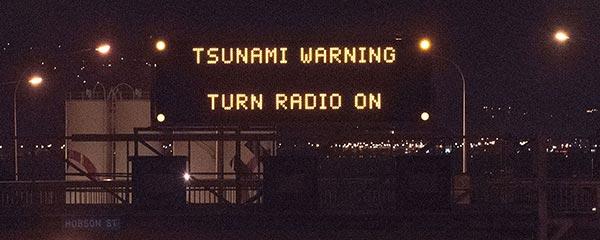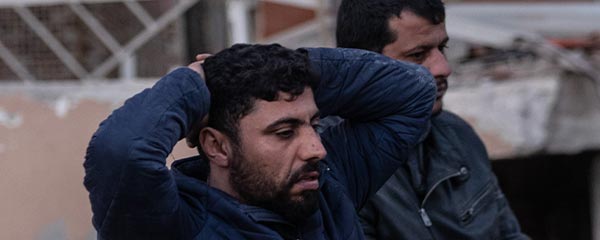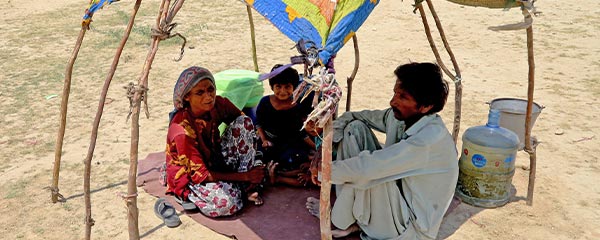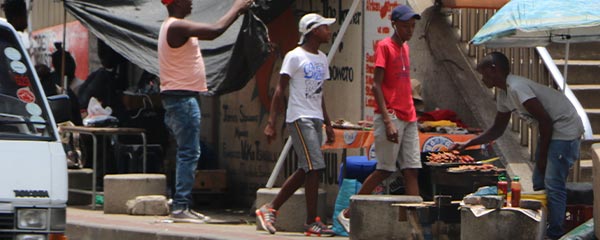LONDON -- Southeast Asia is one of the most disaster-prone areas in the world, but new data from the latest show people in this region also feel more prepared for disasters than almost anywhere else.
Sixty-two percent of adults in Southeast Asia surveyed in 2023 for the World Risk Poll -- the first global survey of people’s perceptions and experiences of risk and safety -- live in a household with a plan that all members know in case of future disaster. Two-thirds (67%) also say they could protect themselves and their families from a future disaster (referred to as feelings of agency).
Only Northern America, which is significantly less disaster-prone, scores close to Southeast Asia for rates of household disaster plans (60%) and individual feelings of agency (67%).
A Highly Disaster-Prone Region
Globally, reports of experiencing disasters have been increasing in recent years. In 2021, 27% of the world’s adult population reported experiencing a disaster in the past five years, which increased to 30% in 2023. This was primarily driven by flooding, which 13% of people worldwide had experienced, compared with 10% in 2021.
The same is true in Southeast Asia. Two in five people in the region (40%) said they had experienced a disaster related to a natural hazard in the past five years, up from 36% in the 2021 World Risk Poll. This is on par with Australia and New Zealand (41%) for the highest disaster experience within the past five years.
Southeast Asia lies on the Pacific Ring of Fire, with most countries situated on archipelagos or peninsulas, where large urban populations along the coasts are vulnerable to flooding from cyclones and monsoon rains.
Globally, no other country ranks higher than the Philippines (87%) for experiencing a disaster within the past five years. The country has recently seen high levels of tropical storms, earthquakes and flooding.
Southeast Asia Stands Out for Planning, Sense of Agency
Disaster preparedness -- which includes household planning and feelings of being able to protect oneself -- is vitally important in building resilience against natural hazards. Preparedness helps save both lives and livelihoods, minimizing the shock of disasters and allowing people to bounce back faster from them.
The top four countries worldwide where the highest proportion of households have a disaster plan are all in Southeast Asia: the Philippines (84%), Vietnam (83%), Cambodia (82%) and Thailand (67%).
Planning and a sense of being able to protect oneself from future disasters are closely related, and both are important aspects of resilience to develop. Higher-income countries tend to have higher levels of planning and agency in the face of disasters. Yet, many Southeast Asian countries buck this trend, performing strongly on these metrics despite being lower-middle-income countries.
As a result, these countries score highly -- considering their income level -- on the , a unique resource for understanding the resilience and vulnerabilities of countries and communities worldwide.
Significant progress has been made toward disaster preparedness in Southeast Asia in recent years, with the Association of Southeast Asian Nations (ASEAN) playing a key role in disaster risk reduction. That said, while disaster preparedness in the region stands out globally, other forms of resilience give more cause for concern.
Financial resilience has slipped in the region. In 2021, 30% of adults said they could meet their basic household needs for less than a month if they lost all income. This rose to 35% in 2023.
Nearly Three in Four Adults in Southeast Asia Said They Received a Warning Before a Disaster
Beyond feelings of agency and household plans, Southeast Asia also ranks highly for its coverage of early disaster warnings. Among those who had experienced a disaster within the past five years, 74% of adults in Southeast Asia said they had received at least one early warning (from the internet/social media, local government, radio/TV/newspaper, or local community organization), above the global average of 70%.
Majorities of people in all Southeast Asian countries had received at least one disaster warning, with all countries apart from Malayasia and Indonesia scoring above the global average for the reach of early warnings. In Vietnam (99%) and the Philippines (92%), coverage rates for early warnings are nearly universal.
Bottom Line
As the world continues to experience more climate-related disasters, particularly those related to flooding, it is increasingly important to build resilience among communities and regions most at risk from them.
Southeast Asia stands out as a success story in this regard. As a region composed of upper- and lower-middle-income countries, it bucks the global trend and demonstrates that preparedness, household planning and feelings of agency can be built successfully in less affluent countries. While challenges and room for improvement remain, as they do in every region, Southeast Asia has a lot to teach the world in building resilience against future disasters.
Read more about from Lloyd’s Register Foundation.
To stay up to date with the latest 优蜜传媒News insights and updates, follow us on X .
For complete methodology and specific survey dates, please review .
Learn more about how the works.




